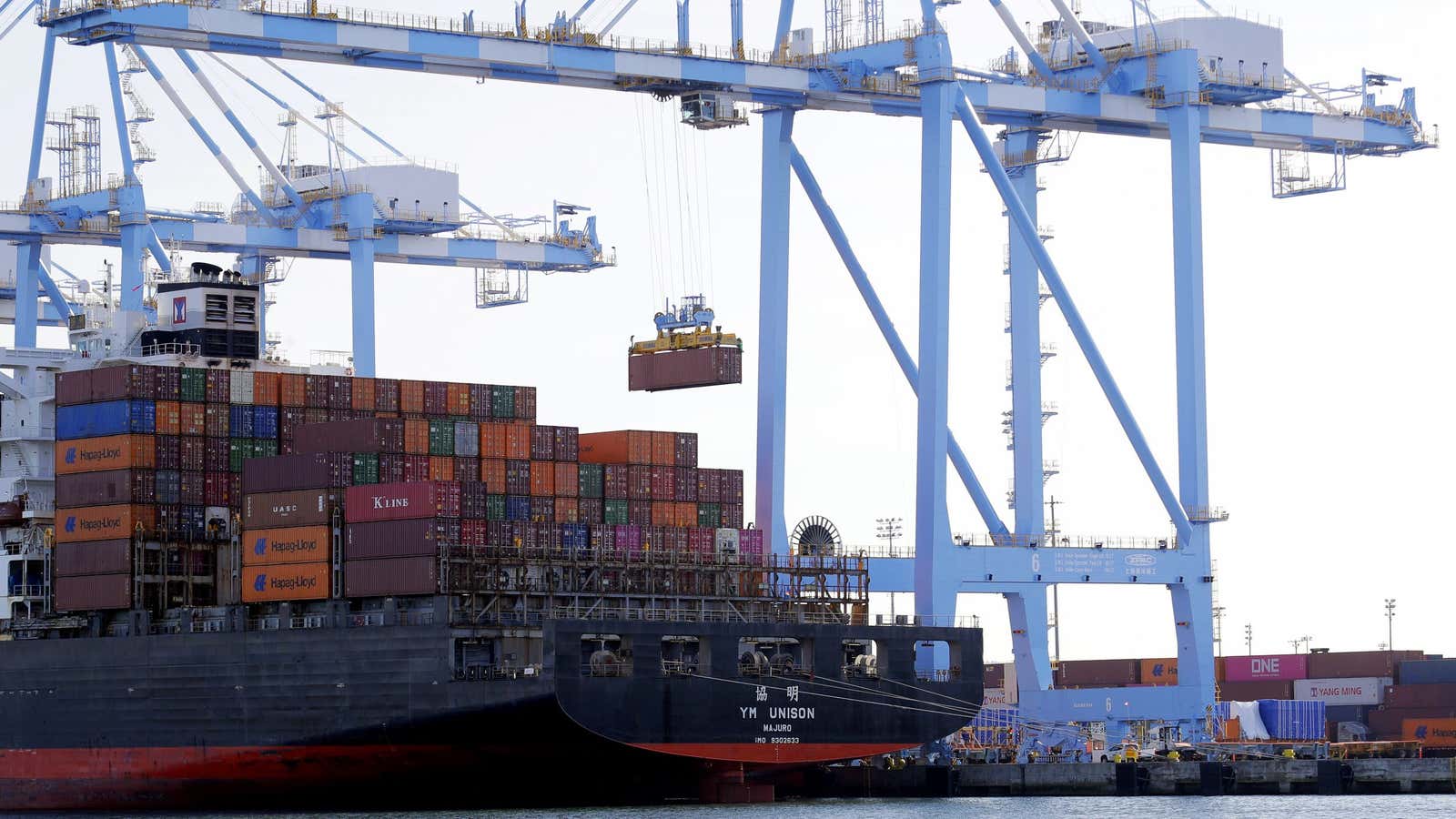2019 was a bad year for global trade. According to the World Trade Monitor, compiled by the Netherlands Bureau for Economic Policy Analysis, global trade volumes were 1.1% lower in November 2019 than in November 2018.
It was the sixth straight month that global trade was lower than the year before. It was the first time since 2009, during the depths of the global financial crisis, that trade declined for so many months in a row. The data for November was released on January 24th, and accounts for about 99% of global trade.
Though the decrease in global trade has been in large part due to trade tensions between China and the US, the effects have not been concentrated in those two countries. Exports from every region of the world (except Eastern Europe) were down from November 2018 to November 2019.
Africa, the Middle East, and Latin America have plummeted most quickly because of a fall in oil prices. Japan’s declining exports were due to decreasing demand from the US for Japanese cars and machinery, and plastic exports to China.
The World Bank expects global trade to return to growth in 2020, with a 1.9% increase in global trade volumes, followed by a jump of more than 2% in 2021 and 2022. These projections are based on the expectation of continued progress in trade negotiations between the US and China, as well as deals between the US and Japan. Yet there are good reasons to be skeptical that 2020 will be a year of “trade peace“—namely, that the US will likely continue to export less than it imports from many of its biggest trading partners, which is what sparked the trade tensions in the first place.
